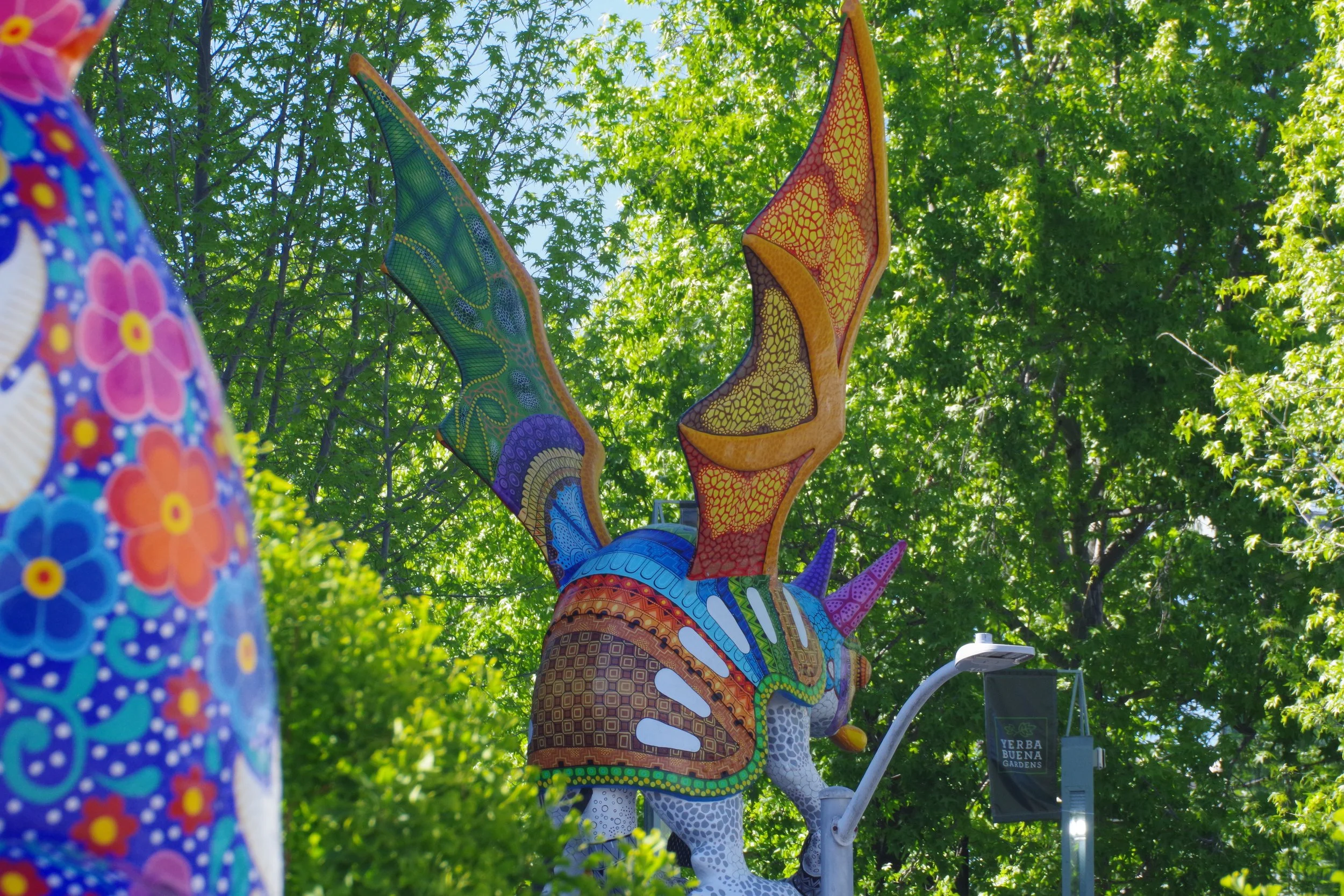EXHIBITON BACKGROUND.
On display from August 12 through September 28-2025 at Plaza de César Chávez in San José.
Ten monumental alebrije sculptures debuted at the Lille3000 Festival in France in 2019, inspired by Mexico City's annual Desfile de Alebrijes parade, where approximately 200 papier-mâché alebrijes process through the streets each October. Following the festival's eight-month run, the works traveled to the Parc de la Villette in Paris.
In April 2025, eight new sculptures began a United States tour, activating public spaces nationwide. The works celebrate Mexico's cultural heritage while honoring Zapotec artistic traditions and the craftsmanship of contemporary artisans from Oaxaca to Mexico City. LED light sequences programmed into each sculpture animate the forms after dark, adapting this ancient practice for the twenty-first century.
EL HISTORIAL DE LA EXPOSICIÓN.
La exhibición habre del 12 de agosto al 28 de septiembre de 2025 en la Plaza de César Chávez, San José.
Diez alebrijes monumentales se presentaron por primera vez en el Festival Lille3000 en Francia en 2019, inspirados por el desfile anual de alebrijes de la Ciudad de México, donde aproximadamente 200 figuras de papier-mâché pasan por las calles cada octubre. Tras la exhibición de ocho meses, las obras viajaron al Parc de la Villette en París.
En abril de 2025, ocho nuevas esculturas empezaron una gira por Estados Unidos, activando espacios públicos en todo el país. Las obras celebran el patrimonio cultural de México, honrando las tradiciones artísticas Zapotecas y el talento artesanal contemporáneo, desde Oaxaca hasta la Ciudad de México. Secuencias de luces LED programadas en cada escultura animan sus formas al anochecer, adaptando esta práctica ancestral al siglo 21.

JOURNEY TO SAN JOSÉ
The journey of these alebrijes to San Jose has been year's in the making. The vision for this installation was originally inspired by the beloved temporary art installation, the Musical Swings, produced by San Jose Jazz 2016. This visit of alebrijes to San Jose is the first leg of a North American tour over the course of the next two years. This exhibition of monumental scale alebrijes & nahuales has been curated by Carlomango Pedro Martínez, Director of the Museo Estatal de Arte Popular de Oaxaca (MEAPO) and project managed by Romain Greco, Director of the International Cervantino Festival and Tour Producer of The Walk, Little Amal's journey through Mexico in 2023.
Helmed by San Jose Jazz, the 60-day long installation and accompanying community programs, involves a broad mix of San Jose community partners. Be sure to explore our calendar of events to learn about alebrijes associated activities happening through September

The BUILDERS
The monumental 20-foot alebrijes were assembled in collaboration with two outstanding Mexican art collectives, El Volador and Artsumex, with supervision provided by the original artists. The exhibition’s team of architects and engineers translated the small, hand-made art pieces into giant versions using calculated planning and measurements, ensuring that they met any and all safety requirements of every host city. Each enlarged reproduction is unique, made by placing removable fiberglass pieces over an internal metal structure and base. This construction allows the sculptures to be sturdy and weather-safe enough for long-term public display. The additional inclusion of an LED lighting system transforms the exhibition’s appearance at night with illumination. Moving the massive pieces, each weighing approximately 1200 pounds with 1000-pound bases, requires using a 53-foot box truck.


